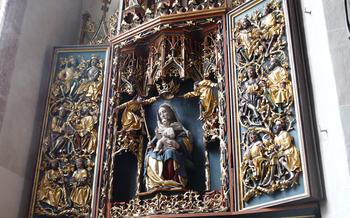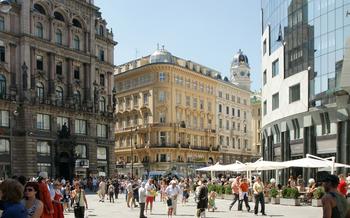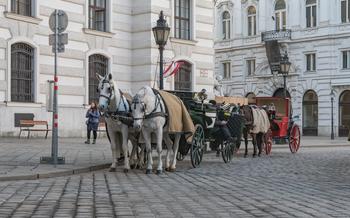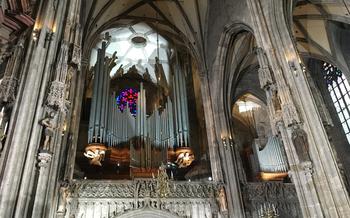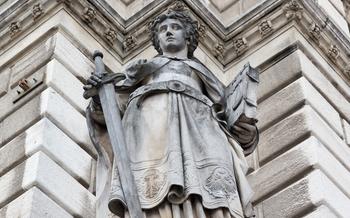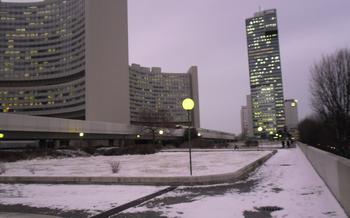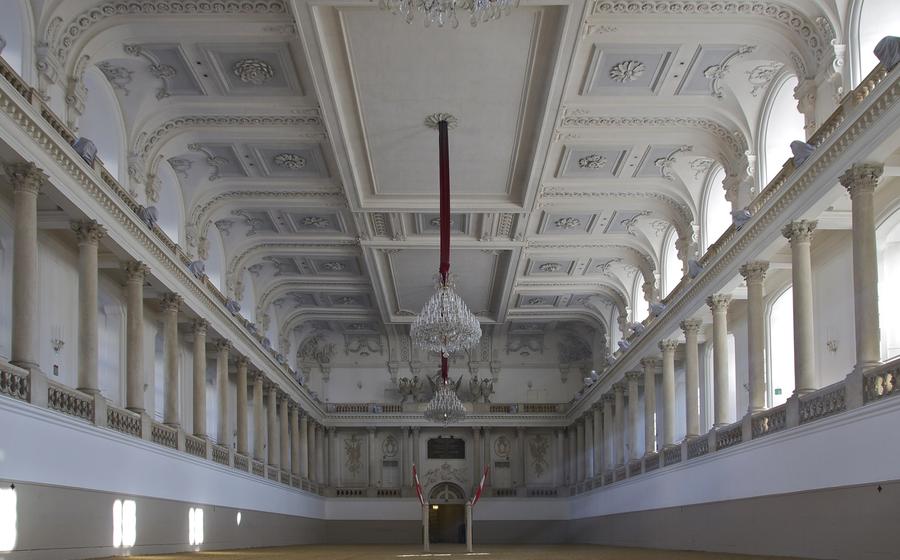
Spanish Riding School
- A Tradition of Elegance: The History of the Spanish Riding School
- A Glimpse into Equestrian Mastery: The Morning Workouts
- A Showcase of Grace and Precision: The Performances
- Behind the Scenes: A Peek into the Stables
- A Legacy of Excellence: The Riders
- A Touch of Royalty: The Imperial Palace
- A Cultural Gem in Vienna: The Spanish Riding School's Significance
- The Perfect Souvenir: The Spanish Riding School Shop
- Planning Your Visit: Essential Information
- Capturing the Elegance: Photography Tips
- For the Equestrian Enthusiast: Riding Lessons and Workshops
- A Culinary Delight: Dining in the Imperial Stables
- Insider Tip: Explore the Hidden Gems of the School
A Tradition of Elegance: The History of the Spanish Riding School
Nestled in the heart of Vienna, the Spanish Riding School stands as a living testament to the grace, elegance, and equestrian mastery that have defined its legacy for over 450 years. Founded in 1572 by Emperor Maximilian II, the school's roots are deeply entwined with the Habsburg dynasty, which ruled over the vast Austro-Hungarian Empire for centuries.
From its humble beginnings as a training ground for the imperial cavalry, the Spanish Riding School evolved into a world-renowned institution dedicated to preserving and promoting the art of classical horsemanship. At the heart of this tradition lies the Lipizzan breed, a majestic horse renowned for its intelligence, athleticism, and innate ability to perform intricate dressage movements.
Over the centuries, the Spanish Riding School has played a pivotal role in shaping the development of classical horsemanship. Its riders and horses have captivated audiences around the globe with their breathtaking performances, showcasing the harmonious partnership between human and animal. In recognition of its exceptional cultural significance, UNESCO inscribed the school on its World Heritage List in 2015, cementing its status as a global treasure.
A Glimpse into Equestrian Mastery: The Morning Workouts
At the Spanish Riding School, the day begins early for both horses and riders. The morning workouts are a crucial part of the horses' training and fitness regimen, laying the foundation for their graceful performances.
As the sun rises over Vienna, the stables come alive with activity. The grooms carefully prepare the horses, brushing their coats until they gleam and saddling them with precision. The riders, dressed in their elegant uniforms, arrive and begin their warm-up exercises, stretching and limbering up to ensure they are in sync with their equine partners.
The workouts take place in the school's indoor arena, a majestic space with vaulted ceilings and mirrors lining the walls. The riders guide their horses through a series of movements, from simple walk and trot to more complex maneuvers. The emphasis is on precision, harmony, and elegance, as the horses learn to respond to the slightest cues from their riders.
The morning workouts are not just about physical training; they are also about building a strong bond between horse and rider. The riders spend hours each day working with their horses, developing a deep understanding and trust that is essential for the seamless performances they deliver.
Watching the morning workouts at the Spanish Riding School is a unique opportunity to witness the dedication and skill of these equestrian masters. The grace and precision of the horses, combined with the riders' mastery of their craft, create a spectacle that is both awe-inspiring and unforgettable.
A Showcase of Grace and Precision: The Performances
The Spanish Riding School offers a variety of captivating performances that showcase the exceptional skills and harmony of its horses and riders. The most renowned performance is the "Gala Performance", which takes place in the historic Winter Riding School, a stunning baroque hall with a rich history. During this performance, the horses and riders perform a series of intricate dressage movements, including the famous "airs above the ground." These movements, which include the piaffe, passage, and levade, demonstrate the horses' remarkable balance, agility, and obedience.
Other performances offered by the school include the "Morning Workouts", which provide a glimpse into the daily training routine of the horses and riders, and the "Lipizzaner Stallion Show", which features the majestic stallions of the school performing a variety of dressage exercises and showcasing their impressive strength and grace.
The performances at the Spanish Riding School are renowned for their elegance, precision, and artistry. The riders, dressed in traditional costumes, guide their horses through intricate movements with effortless grace, creating a spectacle that is both visually stunning and deeply moving. The performances are accompanied by classical music, which adds to the overall atmosphere of grandeur and sophistication.
Behind the Scenes: A Peek into the Stables
Venture beyond the grand performances and into the heart of the Spanish Riding School: its meticulously maintained stables. Here, the Lipizzan horses receive the utmost care and attention, ensuring their well-being and continued excellence.
The stables exude an aura of tranquility and order, with each horse occupying its own spacious stall. The grooms, dedicated to their charges, meticulously clean and groom the horses, ensuring their coats gleam and their manes and tails flow flawlessly.
The horses' diet is carefully monitored, with a focus on providing them with the nutrients they need to maintain their strength and vitality. Each horse receives a customized diet tailored to its individual requirements, ensuring optimal health and performance.
Veterinary care is of paramount importance, and the school employs a team of experienced veterinarians who regularly check the horses' health and address any medical issues that may arise. The horses receive regular vaccinations, deworming, and dental care, ensuring they remain in peak condition.
Beyond the routine care, the stables are also home to moments of playfulness and affection. The Lipizzan horses, known for their gentle and curious nature, often interact with the grooms and visitors, forming unique bonds that transcend the confines of the stables.
A Legacy of Excellence: The Riders
At the heart of the Spanish Riding School's success lies a lineage of extraordinary riders who have dedicated their lives to the art of dressage. These skilled equestrians, known as Bereiter, are carefully selected for their talent, passion, and unwavering commitment to horsemanship.
Throughout history, the school has been graced by legendary riders who have left an indelible mark on the world of dressage. Among them, Alois Podhajsky stands out as one of the most influential figures. Podhajsky, who served as chief rider and director of the school from 1937 to 1966, is credited with revitalizing the Spanish Riding School after World War II and re-establishing its reputation as a global leader in classical horsemanship.
Another notable rider is Hubertus Schmidt, who joined the school in 1983 and quickly rose through the ranks to become a Bereiter. Schmidt is renowned for his exceptional skills in dressage and has won numerous prestigious awards, including the World Cup Dressage Final in 199
The riders at the Spanish Riding School undergo rigorous training and education to master the art of dressage. They spend countless hours honing their skills, developing a deep understanding of horse psychology, and cultivating a harmonious relationship with their equine partners.
The bond between rider and horse is paramount at the school. The riders work tirelessly to earn the trust and respect of their horses, creating a foundation of mutual understanding and cooperation. This connection is evident in the performances, where the horses respond seamlessly to the riders' subtle cues, executing complex movements with grace and precision.
The riders of the Spanish Riding School are not merely performers; they are ambassadors of classical horsemanship, dedicated to preserving and promoting this centuries-old tradition. Their skill, dedication, and passion continue to inspire generations of equestrians worldwide, ensuring that the legacy of the Spanish Riding School lives on.
A Touch of Royalty: The Imperial Palace
Nestled in the heart of Vienna, the Spanish Riding School finds its home within the majestic Imperial Palace, a symbol of Habsburg grandeur and opulence. The palace, with its sprawling courtyards, elegant ballrooms, and opulent state rooms, has witnessed centuries of history, playing host to royal ceremonies, lavish banquets, and countless tales of intrigue. The Spanish Riding School building, with its distinctive yellow façade and arched windows, forms an integral part of this architectural masterpiece, adding a touch of equestrian elegance to the imperial ensemble.
Explore the grand halls of the palace, marveling at the intricate tapestries, sparkling chandeliers, and gleaming marble floors. Admire the works of art that adorn the walls, capturing the essence of imperial life and the Habsburg dynasty's rich heritage. Step into the Spanish Riding School building, and you'll be transported to a world of equestrian excellence, where the echoes of hooves on cobblestones and the gentle commands of riders fill the air.
The Imperial Palace, with its blend of history, architecture, and equestrian artistry, offers a glimpse into the grandeur of a bygone era. It's a place where the past comes alive, where the elegance of the Spanish Riding School harmonizes with the imperial legacy of the Habsburgs, creating a truly unforgettable experience.
A Cultural Gem in Vienna: The Spanish Riding School's Significance
The Spanish Riding School transcends its role as a mere equestrian institution; it stands as a symbol of Viennese culture and heritage, deeply intertwined with the city's identity. Its enduring legacy has transformed it into a cultural gem, attracting visitors worldwide.
The school's significance extends beyond its equestrian prowess; it embodies the essence of Viennese elegance and refinement. The performances, with their intricate choreography and harmonious movements, offer a glimpse into the city's rich cultural tapestry. The school serves as a reminder of Vienna's imperial past, showcasing the grandeur and opulence that characterized the Habsburg era.
Moreover, the Spanish Riding School plays a crucial role in promoting tourism, drawing visitors from across the globe. Its reputation for excellence and its unique offerings make it a must-see attraction for those seeking a truly Viennese experience. Tourists flock to witness the grace and precision of the performances, immersing themselves in the city's cultural heritage.
The school's contributions to the preservation of classical horsemanship and equestrian arts are immeasurable. Through its rigorous training methods and unwavering dedication to excellence, the Spanish Riding School has become a standard-bearer for classical dressage worldwide. Its riders and horses serve as ambassadors, showcasing the beauty and elegance of this centuries-old equestrian tradition.
The school's significance extends beyond its own walls; it collaborates with other cultural institutions and events, enriching the city's vibrant cultural scene. These collaborations showcase the versatility and adaptability of the Spanish Riding School, demonstrating its ability to transcend traditional boundaries and captivate audiences from diverse backgrounds.
The Perfect Souvenir: The Spanish Riding School Shop
The Spanish Riding School shop is a treasure trove of unique souvenirs and mementos for horse lovers and enthusiasts. Located in the heart of the school's premises, the shop offers a wide range of items that capture the essence of this iconic institution.
From beautifully illustrated books and DVDs showcasing the history, performances, and training methods of the school, to elegant equestrian-themed gifts and accessories, the shop has something for every taste and budget. You can find books that delve into the rich history of the school and its Lipizzan horses, or DVDs that offer a behind-the-scenes look at the daily life and training of these majestic animals.
The shop also carries a variety of high-quality equestrian-themed gifts, such as scarves, ties, cufflinks, and jewelry adorned with the Spanish Riding School logo or featuring motifs inspired by the Lipizzan horses. These items are perfect for anyone who wants to show their love for horses and the equestrian arts.
Supporting the Spanish Riding School through its merchandise sales is an excellent way to contribute to the preservation of this cultural gem and ensure its legacy continues for generations to come. The revenue generated from the shop helps to fund the school's ongoing operations, including the care and training of the Lipizzan horses, as well as the maintenance of the historic buildings and grounds.
Planning Your Visit: Essential Information
Getting There
The Spanish Riding School is conveniently located in the heart of Vienna, within easy reach of public transportation. The nearest U-Bahn (metro) station is Volkstheater, which is a short walk from the school. You can also take a tram or bus to the Burgring stop, which is just a few steps away.
Tickets and Prices
Tickets for performances can be purchased online or at the box office. Prices vary depending on the category of seats and the type of performance. There are also discounts available for students, seniors, and groups.
Best Time to Visit
The best time to visit the Spanish Riding School is during the morning workouts, which are held from 10 am to 12 pm. This is when you can see the horses and riders in action, as they practice their dressage routines. Performances are typically held in the evening, and tickets tend to sell out quickly, so it's a good idea to book in advance.
Dress Code and Etiquette
While there is no strict dress code for attending a performance at the Spanish Riding School, it is customary to dress respectfully. Smart casual attire is appropriate, and it's a good idea to avoid wearing shorts, T-shirts, or sneakers. During the performance, it is important to remain silent and refrain from taking photographs or videos.
Capturing the Elegance: Photography Tips
If you're a photography enthusiast, the Spanish Riding School offers ample opportunities to capture stunning images of the horses and riders in action. Here are some tips to help you take memorable photographs:
- Camera Settings:
- Use a fast shutter speed (1/500th of a second or faster) to freeze the movement of the horses.
- Set your aperture to f/4 or wider to let in plenty of light and achieve a shallow depth of field.
-
Adjust your ISO as needed to ensure proper exposure without introducing too much noise.
-
Composition:
- Position yourself at an angle to the horses to capture their full movement and grace.
- Look for leading lines, such as the lines of the arena or the horses' tails, to draw the viewer's eye into the image.
-
Experiment with different perspectives, such as shooting from above or below, to create dynamic compositions.
-
Lighting:
- Natural light is often the best light for equine photography, so try to schedule your visit during the golden hours of sunrise or sunset.
-
If you're shooting indoors, use a flash or external lighting to illuminate the horses and riders.
-
Patience and Practice:
- Equine photography requires patience and practice to capture the perfect shot. Be prepared to spend time observing the horses and riders before you start shooting.
- Don't be afraid to experiment with different settings and techniques until you find what works best for you.
For the Equestrian Enthusiast: Riding Lessons and Workshops
Are you an equestrian enthusiast eager to learn from the masters of classical horsemanship? The Spanish Riding School offers a unique opportunity to take riding lessons and workshops under the guidance of world-renowned instructors. Whether you're a beginner or an experienced rider, there's a program tailored to suit your skill level and aspirations.
Beginners can start with the basics of horsemanship, learning how to saddle and groom a horse, as well as the fundamentals of riding. As you progress, you'll delve deeper into the art of dressage, mastering the techniques and movements that showcase the elegance and precision of this discipline.
For experienced riders seeking to refine their skills, the school offers advanced workshops focusing on specific aspects of dressage, such as piaffe, passage, and pirouette. These workshops provide an immersive learning experience, allowing you to train alongside the school's expert riders and gain invaluable insights into the art of classical horsemanship.
To book a lesson or workshop, it's advisable to contact the school in advance and inquire about availability and pricing. Be sure to specify your riding experience and the level of instruction you're seeking. The school's friendly staff will be happy to assist you in selecting the most suitable program and guide you through the booking process.
Whether you're a novice rider or a seasoned equestrian, the Spanish Riding School offers an exceptional opportunity to learn from the best and immerse yourself in the world of classical horsemanship. Don't miss this chance to elevate your riding skills and experience the thrill of working with these magnificent Lipizzan horses.
A Culinary Delight: Dining in the Imperial Stables
Nestled within the historic walls of the Spanish Riding School, the Imperial Stables restaurant offers a culinary experience like no other. Step into a world of elegance and tradition as you savor delicious cuisine amidst the grandeur of the former imperial stables.
The restaurant's menu features a delightful blend of traditional Austrian dishes and international favorites, ensuring something to satisfy every palate. Indulge in hearty Viennese Schnitzel, tantalizing Tafelspitz (boiled beef), or opt for a lighter option such as a crisp salad or flavorful pasta.
As you dine, soak up the unique atmosphere of the restaurant, with its vaulted ceilings, intricate chandeliers, and equestrian-themed décor. The soft neighing of the Lipizzan horses in the adjacent stables adds a touch of magic to the ambiance.
For a truly unforgettable experience, reserve a table by the window to enjoy stunning views of the school's courtyard and the majestic horses grazing peacefully. Whether you're a foodie, a history buff, or simply seeking a unique dining experience, the Imperial Stables restaurant is a must-visit when exploring the Spanish Riding School.
Insider Tip: Explore the Hidden Gems of the School
Beyond the main attractions of the Spanish Riding School, there are hidden corners and lesser-known spots that offer a unique and intimate experience for visitors. Here are some insider tips:
-
The Winter Riding Hall: While the performances usually take place in the grand Baroque Riding Hall, the Winter Riding Hall offers a more intimate setting for observing the morning workouts. This smaller and less crowded space allows visitors to get closer to the horses and riders and witness the training process up close.
-
The Carriage Museum: Located in the Stallburg building, the Carriage Museum houses a collection of historic carriages and sleighs used by the Habsburg dynasty. These opulent vehicles provide a glimpse into the lavish lifestyle of the imperial court and the importance of horses in royal transportation.
-
The Imperial Stables: The Imperial Stables, where the Lipizzan horses are housed, are not usually open to the public. However, guided tours or private viewings can be arranged upon request. These tours offer a unique opportunity to learn about the daily care and training of the horses and to see them in their home environment.
-
Special Events and Activities: The Spanish Riding School occasionally hosts special events and activities that are not part of the regular program. These events may include open house days, workshops, and behind-the-scenes tours. Visitors can check the school's website or social media pages for information about upcoming events.



